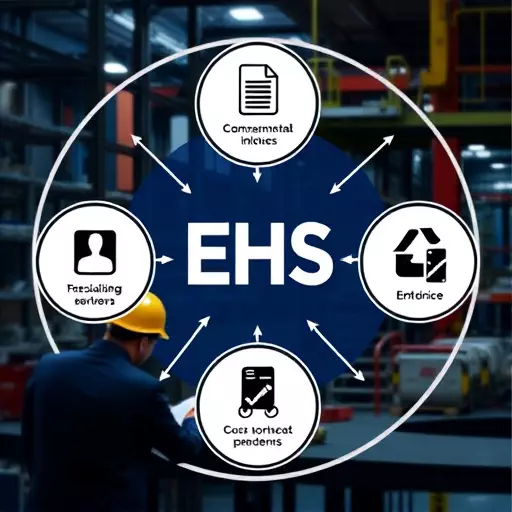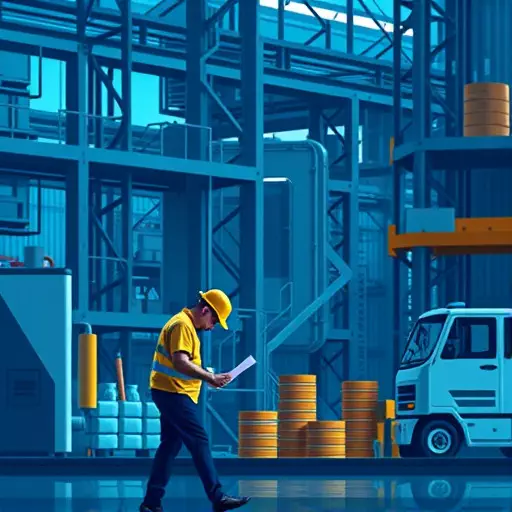Machine guarding is a critical aspect of Environmental Health and Safety (EHS) program development, focusing on protecting workers from machinery hazards through risk assessment, strategic implementation, and regular inspections. Effective EHS compliance strategies, including thorough risk assessments, are essential for achieving safer work environments, enhanced operational efficiency, and employee well-being while fulfilling legal obligations and promoting a culture of safety in industrial settings.
In today’s industrial landscape, Machine Guarding Compliance is a cornerstone of any robust Environmental, Health, and Safety (EHS) program. Ensuring worker safety through proper machine guarding not only complies with legal requirements but also fosters a culture of safety. This comprehensive guide explores the critical components of EHS program development, focusing on understanding machine guarding, implementing effective strategies, and adopting a continuous improvement approach via risk assessment. By delving into these areas, organizations can enhance their ehs compliance strategies and create safer working environments.
- Understanding Machine Guarding Compliance: A Foundation for EHS Program Development
- – Definition and significance in ensuring worker safety
- – Legal requirements and industry standards for machine guarding
Understanding Machine Guarding Compliance: A Foundation for EHS Program Development

Machine Guarding Compliance is a cornerstone in the realm of Environmental Health and Safety (EHS) program development. It involves understanding and implementing safety measures to protect workers from potential hazards associated with machinery. This comprehensive process starts with a thorough risk assessment, where professionals identify and evaluate various risks posed by industrial machines. By conducting regular inspections, identifying dangerous conditions, and analyzing potential consequences, organizations can develop effective EHS compliance strategies.
A robust EHS program integrates machine guarding as a foundational element, ensuring that all machinery is equipped with appropriate safety devices and safeguards. This includes the use of physical barriers, sensors, and other technologies to prevent worker exposure to moving parts or other hazards. By prioritizing machine guarding, companies not only meet regulatory requirements but also demonstrate their commitment to fostering a safe work environment, ultimately enhancing overall operational efficiency and employee well-being.
– Definition and significance in ensuring worker safety

Machine guarding is a critical component of any comprehensive Environmental Health and Safety (EHS) program, designed to protect workers from potential hazards in industrial settings. It involves the implementation of physical barriers or safety devices on machinery to prevent contact with moving parts, reducing the risk of injuries such as amputations, crushes, and burns. The significance of machine guarding compliance cannot be overstated, especially in light of the numerous accidents caused by unsafe machinery operation.
Effective machine guarding strategies are integral to successful EHS program development and encompass a systematic approach, including thorough risk assessment. This process involves identifying potential hazards, evaluating exposure levels, and selecting appropriate control measures. By integrating these ehs compliance strategies, organizations can create safer work environments, mitigate liabilities, and ensure adherence to legal obligations related to worker safety, thereby fostering a culture of safety within their operations.
– Legal requirements and industry standards for machine guarding

In the realm of industrial safety, machine guarding is a critical aspect of any comprehensive EHS (Environmental Health and Safety) program development. Legal requirements and industry standards mandate robust safeguards to protect workers from potential hazards associated with machinery. These regulations are designed to ensure that workplaces conduct thorough risk assessments in their EHS compliance strategies, identifying and mitigating risks related to moving parts, sharp edges, and other mechanical dangers. Non-compliance can lead to severe consequences, including workplace injuries and legal repercussions.
Effective machine guarding involves a multi-faceted approach. It begins with meticulous risk assessment, where potential hazards are identified, evaluated, and prioritized. Based on this analysis, suitable guarding methods such as physical barriers, safety cages, or light curtains are implemented. Regular inspections and maintenance are essential to ensure these safeguards remain effective over time. Integrating machine guarding into an organization’s EHS program not only complies with legal obligations but also fosters a culture of safety, enhancing operational efficiency and minimizing risks in today’s industrial landscape.


